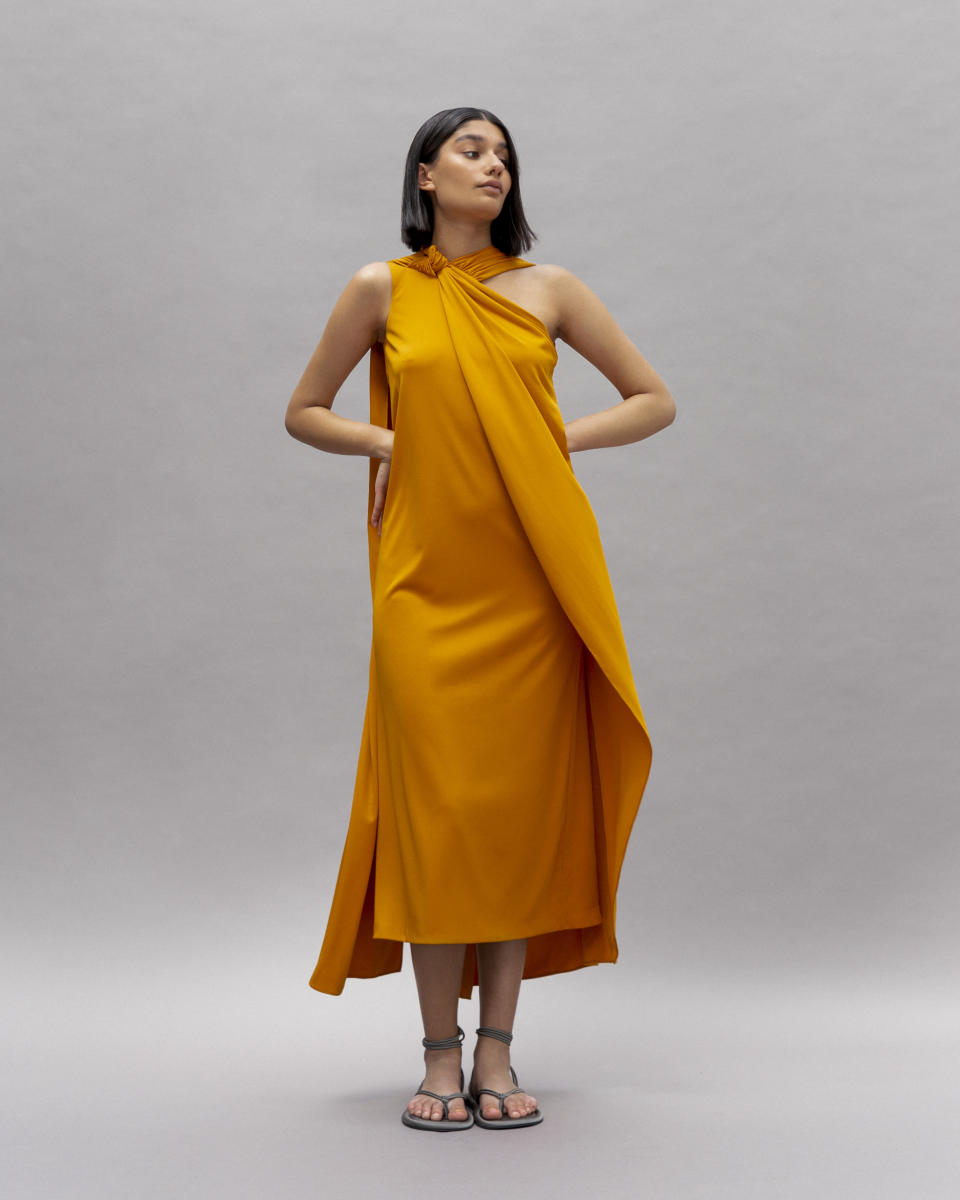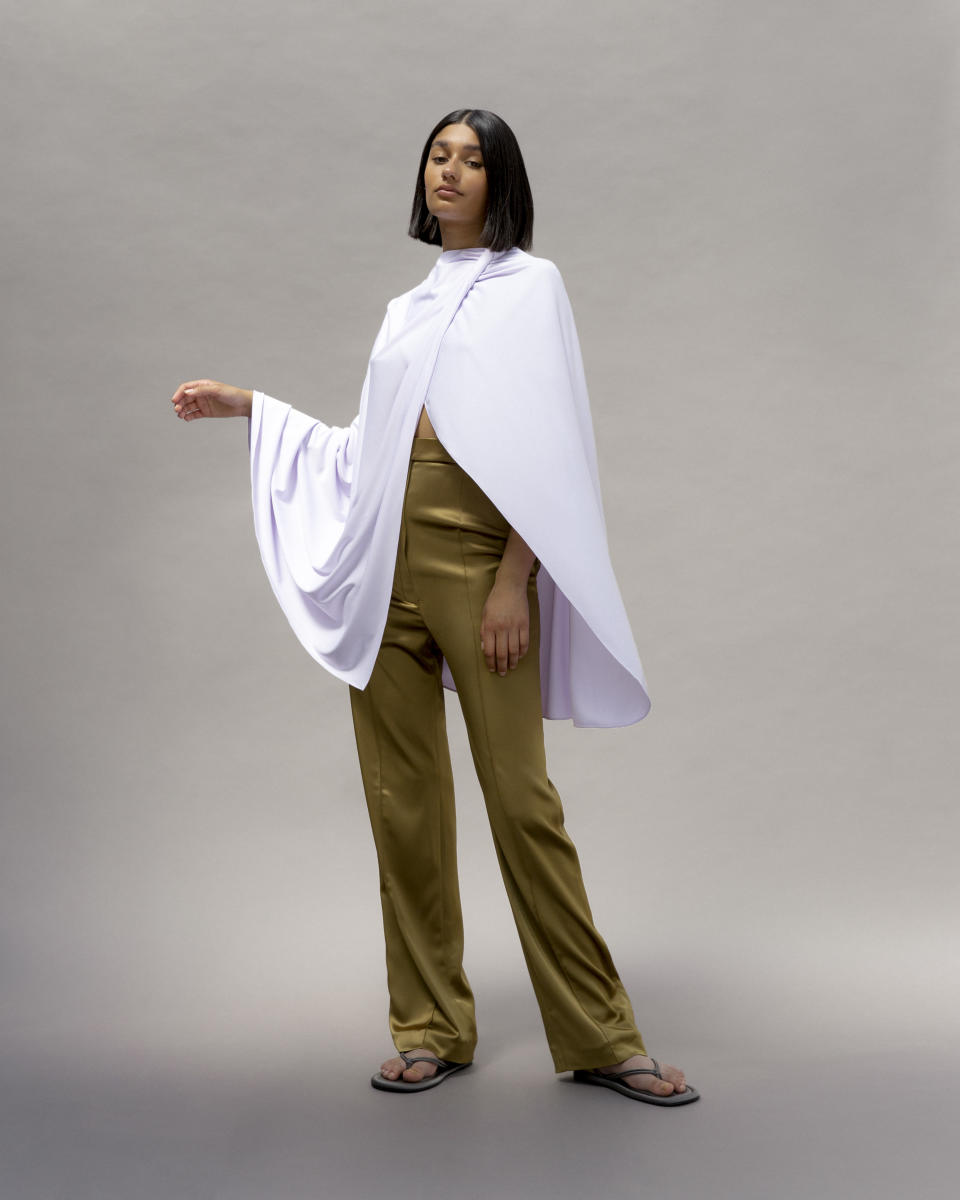Patricia Padrón, a Luxe Label That Prizes Craft Over Consumption, Reemerges

Patricia Padrón wants fashion to find itself again.
Long lost in the frenzy of freshness and fastness, too many in the industry — herself, at one point, included — have kept their foot on the gas at the expense of the product. And amid the spread of sameness bolstered by fast fashion, niche designers are again taking their time to create excitement in sartorial form.
More from WWD
Padrón — with her namesake label, founded in Spain in 2016 and paused in 2019 until the relaunch she’s calling “Chapter 1” set for September — is doing it one hand-placed, laser-cut silk piece at a time.
The label’s signature Poroo top brings couture energy and the Venezuelan designer’s sculptural prowess (owed to a previous architecture background) to the brand that more than just the wealthiest can wear. The top takes up to 10 hours to make, but it’s time the designer has reclaimed having fled the fast-track fashion calendar.
“This wasn’t anything to do with the pandemic itself, I needed some rest and I needed to rethink and to have some time for myself,” Padrón told WWD. Though she had been ready for the relaunch in the midst of COVID-19’s reign, the learnings from her time off aligned with some of the takeaways from life in lockdown.
“The pandemic taught me to see things in a more simple way, to live with less, to learn how to flow with the circumstances and I think that shows in the first collection, the first chapter. It’s more flowy, it’s more malleable, and in my case, the pandemic itself has been a shift and an opportunity to simplify my life in general and to enact important changes in the brand and in the way I communicate with the audience.”
When Patricia Padrón relaunches next month, it will be “mindfully designed” in London and made-to-order in Spain using a model the designer calls “bespoke couture.”
Pieces come with the ease craved amid pandemic life but none of the sweatpant-casualness many are eager to shirk. The Taygeta dress, for one, channels the relaxed nature and fluidity of a toga, and the statement Celeno Cape blends comfort with chic paired back to a simplified trouser. Color enlivens the solid pieces with a balance of bold orange and more understated navy.

Silvana Trevale
“The first approach for me is not on a pattern, not in 2D but in 3D, and I think the architecture itself helped me to see it this way,” Padrón said. “That architectural background helped me to understand dimensions and proportions and balance. I am always in the search of balance.”
Beyond balance in design, Padrón was also looking to better balance her life with the brand, in part for the sake of creativity. That’s why the label will now embrace fresh design drops throughout the year rather than more rigidly timed and expected collections. It’s a mode many slow fashion brands have taken to as they look to find a route around the industry’s traditional pressures.
“In the past, I used to have the timeframe in my head. I became a robot in a way because I needed to do the things in a certain amount of time and, this is very personal, but I lost sight of why I did what I was doing,” she said. “Now the idea is to balance what I know the industry dictates and what I know is right for me and my team and the brand.”
With the reroute, Padrón said she and her team will “create in a more faithful way” and take their time to investigate both the person they’re designing for and what they’re putting out into a world that’s already flooded with stuff.
Fashion, in trying to keep up with modern demands has, in some cases, lost sight of the beauty of the design process, according to Padrón. And that has given rise to losing the consumer’s interest in many cases, too.
“I think we might forget the final client, the woman that’s going to wear it and what she feels when she wears it and the delicacy behind the process in the making and the craftsmanship,” she said. “You have to simplify, [instead of doing] a hem by hand in 30 minutes, you have to maybe do it in a rush in a machine in five [when designing to the traditional collections calendar]. That’s important and I think that reflects in the piece itself. And when you wear it [and] you know it was done for you, you feel it different on your skin and that’s something I don’t want to lose ever.”

Silvana Trevale
Fabrics for the Patricia Padrón collection are sourced in Italy, France, Spain and the U.K., and natural fibers like linen, cotton and silk are the staples.
Endeavoring to bring luxury to more customers, the label is, for the first time, extending its made-to-order model beyond just its private clientele. Now, as Padrón noted, “all our clients enjoy the same personalized experience.” Which also speaks to the brand’s effort to contribute to more conscious consumption and less excess.
“In terms of sustainability, this bespoke couture and made-to-order model allows us to not over-produce, to save space — there’s no waste and I think that really helps the planet, the brands,” she said.
Breaking from the few-day turn many consumers have come to expect, the Poroo top (the label’s most complex because it’s assembled by hand, piece by 45-laser-cut-piece), can take up to six weeks to be ready to ship to the client, though other items in the line take less time.
But because the Patricia Padrón client is “in the search of something meaningful, something that has a story behind it, something that she knows was meant for her and that has a purpose or an intention in a way,” according to the designer, the wait isn’t one increasingly discerning shoppers will be unwilling to bear.
The Chapter 1 Relaunch Collection will be available on the brand’s website in September when clients will be able to begin placing their made-to-orders. Prices range from 662 euros ($785) to 1,782 euros ($2,114) and the label splits into two lines: Patricia Padrón Signature for the “most iconic” and higher-end designs, and Patricia Padrón Lab, which will see drops throughout the year and a more accessible price point. Chapter 2 of the new Patricia Padrón is slated for later this year.
Padrón, in finding herself again with her label, wants her clients to enjoy fashion in its simplest form.
“The idea of the brand is to help women feel better with themselves,” Padrón said. “I want them to look nice because they feel nice. To look good because they feel good, because this piece might be beautiful — we will do everything for it to be beautiful and well done and well made — but the idea is for them to look nice because they feel amazing.”
Best of WWD
Sign up for WWD's Newsletter. For the latest news, follow us on Twitter, Facebook, and Instagram.